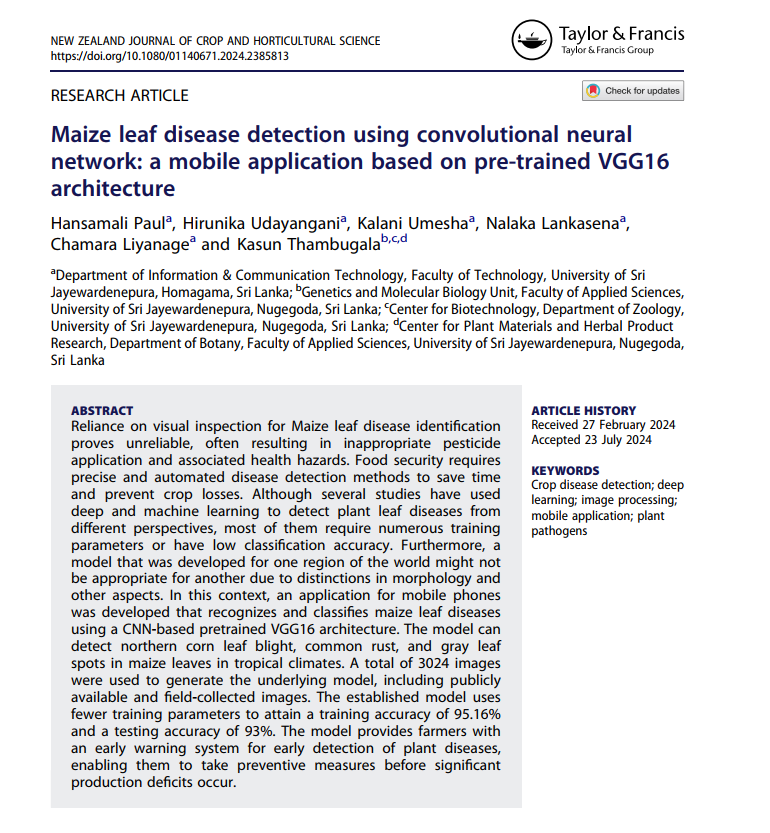Reliance on visual inspection for Maize leaf disease identification proves unreliable, often resulting in inappropriate pesticide application and associated health hazards. Food security requires precise and automated disease detection methods to save time and prevent crop losses. Although several studies have used deep and machine learning to detect plant leaf diseases from different perspectives, most of them require numerous training parameters or have low classification accuracy. Furthermore, a model that was developed for one region of the world might not be appropriate for another due to distinctions in morphology and other aspects. In this context, an application for mobile phones was developed that recognizes and classifies maize leaf diseases using a CNN-based pretrained VGG16 architecture. The model can detect northern corn leaf blight, common rust, and gray leaf spots in maize leaves in tropical climates. A total of 3024 images were used to generate the underlying model, including publicly available and field-collected images. The established model uses fewer training parameters to attain a training accuracy of 95.16% and a testing accuracy of 93%. The model provides farmers with an early warning system for early detection of plant diseases, enabling them to take preventive measures before significant production deficits occur.https://www.tandfonline.com/doi/full/10.1080/01140671.2024.2385813


